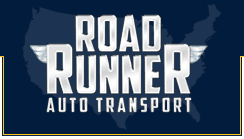
The trusted name in vehicle shipping for over 30 years!
- Track a Shipment
- Dealer Login
- Carrier Login
Speak with a shipping expert
(888) 777-2123

What to Do if Your Car Is Flooded
Posted on 03/21/2025
Realizing your car has been flooded can be overwhelming, but quick action is necessary to minimize damage and salvage your vehicle. The first 24-48 hours are critical for preventing secondary issues like mold growth and electrical corrosion.
Immediate Actions After Finding Your Flooded Car
When you discover your car has been underwater, the steps you take right away are very important. Do not start the car, as this could harm the electrical system and engine parts:
- Assess the water level. If water only reaches the floor, you might dry it out with little professional help. If the water rises to the dashboard or higher, the damage is likely major.
- Remove all standing water quickly using towels, buckets, or a wet/dry vacuum. Water left in your vehicle increases the risk of mold and rust on metal parts.
Protect your investment after flood damage by learning how to ship a car safely to your destination, eliminating the risks of driving a compromised vehicle across long distances.
Documenting Flood Damage For Records
Before you start cleanup or repairs, fully document the condition of your flooded car. This helps when dealing with repair shops and for your records. Take clear photos of water levels inside and outside the vehicle. Take pictures of any visible damage to the interior, engine area, and trunk. Make a written list of all affected items and areas. Note any strange smells, visible mold, or rust that has started to form.
Ready to purchase a new vehicle? Read our car buying guide for 2025.
Importance Of Taking Photos Of The Flooded Car
Visual proof is vital when handling flood-damaged vehicles. Photos clearly show your car’s condition after flooding. Take detailed pictures before cleaning starts to show the initial damage. Include close-ups of water lines on the exterior and interior. Document the cleaning and inspection process for future reference.
How Flood Water Affects Your Car’s Electrical System
Water intrusion can devastate your car’s electrical system, often leading to short circuits, corrosion, and component failure. Modern vehicles have sophisticated electronics that control nearly every function:
Electric Fuel Pump Problems
The electric fuel pump sits in or near the fuel tank and sends fuel to the engine at the right pressure. Water in the pump can cause internal rust, electrical shorts, and early failure. Moisture can also lead to rust and dirt in the fuel lines.
Power Steering Impact
Most cars now use electric power steering systems that water can damage. The electronic parts controlling steering help are easily harmed by water. Flood water can ruin the steering control module, sensors, and electric motor, making steering harder. Connectors and wiring can rust over time, even after they dry out.
Vulnerable Electrical Components
Electrical components in your vehicle are at high risk when exposed to flood water:
- The body control module, which runs power windows, locks, and lights, often sits in spots where water collects. These sensitive computers can short-circuit immediately or fail gradually as corrosion develops.
- Sensors throughout the car may give wrong readings or stop working after getting wet. This includes important safety systems like antilock brakes, airbags, and engine management controls.
Engine Components Needing Immediate Attention After Flooding
The engine requires urgent care after flood exposure. Water can displace oil and lubricants, leading to friction and damage when metal components make contact:
Spark Plugs
Spark plugs power your engine’s ignition system and can be damaged by water. Remove them with a spark plug socket and inspect for water contamination or corrosion. New spark plugs cost much less than fixing damage caused by using bad ones.
Intake Tract
The intake tract requires immediate inspection after flood exposure:
- Examine the intake system for water contamination. The intake tract directs air to your engine but can also channel flood water into cylinders, potentially causing severe engine damage that may require complete rebuilding.
- Address any water-affected components promptly. Remove the air filter housing, check if the filter is wet, replace it if necessary, and thoroughly dry all accessible intake parts with a lint-free cloth to prevent rust and further complications.
Fuel Pump System
Water in fuel causes engine problems and can damage the fuel pump and injectors. If you think water entered the fuel tank, don’t start the engine—have a mechanic drain the tank. For small amounts of water, a fuel system additive that removes water might work.
Long-Term Solutions For A Flood-Damaged Car
Once immediate concerns have been addressed, you’ll need to consider the long-term outlook for your vehicle:
Friction Materials
Brake pads, clutch plates, and transmission bands can soak up water during flooding. Wet friction materials perform differently – brakes may feel spongy or slow to respond. A mechanic can check if these parts need replacement.
When to Get Professional Help
Get a professional inspection when flood damage is extensive, or you’re unsure about key vehicle systems. Seek help if water rises above the floorboards or if warning lights appear. A professional assessment costs less than fixing overlooked damage later.
Signs Your Car May Be Beyond Repair
Your vehicle may be too damaged to economically repair after flooding:
- Assess the highest point water reached in your vehicle. If water rose to dashboard level or higher, comprehensive damage to electrical systems and computers has likely occurred, making repair costs prohibitive compared to the vehicle’s value.
- Check for persistent odors after drying attempts. Stubborn mold or mildew smells that remain despite thorough cleaning often indicate contamination in inaccessible areas, which can cause ongoing health concerns and electrical problems that make restoration impractical.
About RoadRunner Auto Transport
We understand the challenges of managing flood-damaged vehicles. Our nationwide door-to-door shipping services offer a convenient solution for transporting your vehicle to specialized repair facilities or when relocating after flood events. With 30+ years of experience, our shipping professionals handle all vehicle types, including those needing special care. We provide both open carrier and enclosed transport options with complete vehicle coverage for peace of mind.
Get an instant quote using our online calculator today.
Frequently Asked Questions
What is the first thing to do in a flooded car?
The first thing to do when dealing with a flooded car is to avoid starting the engine and document the damage with photos. Documentation helps assess the extent of the damage while preventing problems that could occur if water enters the engine during startup.
How do you unflood your car?
Unflooding a car requires removing standing water with towels or a wet vacuum and thoroughly drying all components, including seats, carpets, and electrical systems. Professional help is recommended for drying hard-to-reach areas and checking critical systems like brakes, transmission, and engine components to ensure they’re not compromised.
Can a car still work after being flooded?
A car can sometimes work after flooding, depending on the water level and how quickly proper drying and inspection occurred. Long-term reliability depends on whether electrical components and engine systems were protected from water or properly restored by qualified technicians.
Instant Car Shipping Quote
Calculate your car shipping rate in 3 easy steps!
What to Do if Your Car Is Flooded
Posted on 03/21/2025
Realizing your car has been flooded can be overwhelming, but quick action is necessary to minimize damage and salvage your vehicle. The first 24-48 hours are critical for preventing secondary issues like mold growth and electrical corrosion.
Immediate Actions After Finding Your Flooded Car
When you discover your car has been underwater, the steps you take right away are very important. Do not start the car, as this could harm the electrical system and engine parts:
- Assess the water level. If water only reaches the floor, you might dry it out with little professional help. If the water rises to the dashboard or higher, the damage is likely major.
- Remove all standing water quickly using towels, buckets, or a wet/dry vacuum. Water left in your vehicle increases the risk of mold and rust on metal parts.
Protect your investment after flood damage by learning how to ship a car safely to your destination, eliminating the risks of driving a compromised vehicle across long distances.
Documenting Flood Damage For Records
Before you start cleanup or repairs, fully document the condition of your flooded car. This helps when dealing with repair shops and for your records. Take clear photos of water levels inside and outside the vehicle. Take pictures of any visible damage to the interior, engine area, and trunk. Make a written list of all affected items and areas. Note any strange smells, visible mold, or rust that has started to form.
Ready to purchase a new vehicle? Read our car buying guide for 2025.
Importance Of Taking Photos Of The Flooded Car
Visual proof is vital when handling flood-damaged vehicles. Photos clearly show your car’s condition after flooding. Take detailed pictures before cleaning starts to show the initial damage. Include close-ups of water lines on the exterior and interior. Document the cleaning and inspection process for future reference.
How Flood Water Affects Your Car’s Electrical System
Water intrusion can devastate your car’s electrical system, often leading to short circuits, corrosion, and component failure. Modern vehicles have sophisticated electronics that control nearly every function:
Electric Fuel Pump Problems
The electric fuel pump sits in or near the fuel tank and sends fuel to the engine at the right pressure. Water in the pump can cause internal rust, electrical shorts, and early failure. Moisture can also lead to rust and dirt in the fuel lines.
Power Steering Impact
Most cars now use electric power steering systems that water can damage. The electronic parts controlling steering help are easily harmed by water. Flood water can ruin the steering control module, sensors, and electric motor, making steering harder. Connectors and wiring can rust over time, even after they dry out.
Vulnerable Electrical Components
Electrical components in your vehicle are at high risk when exposed to flood water:
- The body control module, which runs power windows, locks, and lights, often sits in spots where water collects. These sensitive computers can short-circuit immediately or fail gradually as corrosion develops.
- Sensors throughout the car may give wrong readings or stop working after getting wet. This includes important safety systems like antilock brakes, airbags, and engine management controls.
Engine Components Needing Immediate Attention After Flooding
The engine requires urgent care after flood exposure. Water can displace oil and lubricants, leading to friction and damage when metal components make contact:
Spark Plugs
Spark plugs power your engine’s ignition system and can be damaged by water. Remove them with a spark plug socket and inspect for water contamination or corrosion. New spark plugs cost much less than fixing damage caused by using bad ones.
Intake Tract
The intake tract requires immediate inspection after flood exposure:
- Examine the intake system for water contamination. The intake tract directs air to your engine but can also channel flood water into cylinders, potentially causing severe engine damage that may require complete rebuilding.
- Address any water-affected components promptly. Remove the air filter housing, check if the filter is wet, replace it if necessary, and thoroughly dry all accessible intake parts with a lint-free cloth to prevent rust and further complications.
Fuel Pump System
Water in fuel causes engine problems and can damage the fuel pump and injectors. If you think water entered the fuel tank, don’t start the engine—have a mechanic drain the tank. For small amounts of water, a fuel system additive that removes water might work.
Long-Term Solutions For A Flood-Damaged Car
Once immediate concerns have been addressed, you’ll need to consider the long-term outlook for your vehicle:
Friction Materials
Brake pads, clutch plates, and transmission bands can soak up water during flooding. Wet friction materials perform differently – brakes may feel spongy or slow to respond. A mechanic can check if these parts need replacement.
When to Get Professional Help
Get a professional inspection when flood damage is extensive, or you’re unsure about key vehicle systems. Seek help if water rises above the floorboards or if warning lights appear. A professional assessment costs less than fixing overlooked damage later.
Signs Your Car May Be Beyond Repair
Your vehicle may be too damaged to economically repair after flooding:
- Assess the highest point water reached in your vehicle. If water rose to dashboard level or higher, comprehensive damage to electrical systems and computers has likely occurred, making repair costs prohibitive compared to the vehicle’s value.
- Check for persistent odors after drying attempts. Stubborn mold or mildew smells that remain despite thorough cleaning often indicate contamination in inaccessible areas, which can cause ongoing health concerns and electrical problems that make restoration impractical.
About RoadRunner Auto Transport
We understand the challenges of managing flood-damaged vehicles. Our nationwide door-to-door shipping services offer a convenient solution for transporting your vehicle to specialized repair facilities or when relocating after flood events. With 30+ years of experience, our shipping professionals handle all vehicle types, including those needing special care. We provide both open carrier and enclosed transport options with complete vehicle coverage for peace of mind.
Get an instant quote using our online calculator today.
Frequently Asked Questions
What is the first thing to do in a flooded car?
The first thing to do when dealing with a flooded car is to avoid starting the engine and document the damage with photos. Documentation helps assess the extent of the damage while preventing problems that could occur if water enters the engine during startup.
How do you unflood your car?
Unflooding a car requires removing standing water with towels or a wet vacuum and thoroughly drying all components, including seats, carpets, and electrical systems. Professional help is recommended for drying hard-to-reach areas and checking critical systems like brakes, transmission, and engine components to ensure they’re not compromised.
Can a car still work after being flooded?
A car can sometimes work after flooding, depending on the water level and how quickly proper drying and inspection occurred. Long-term reliability depends on whether electrical components and engine systems were protected from water or properly restored by qualified technicians.
"The driver was professional and courteous. Very pleased with my entire experience with RoadRunner Auto Transport."
Sally D.
Atlanta, GA


"When I bought a car out of state I was unsure what to expect with the shipping. RoadRunner made everything so easy!"
Jenna D.
Lufkin, TX


"Out of all the car shipping companies we spoke with, RoadRunner was the most professional and knowledgable."
Corey L.
Boston, MA


"We needed 2 cars shipped across the country last minute and RoadRunner really came through big time for us!"
Amanda M.
Los Angeles, CA


Frequently Asked Questions
Get answers to some of the most commonly asked questions about the vehicle transportation process.








